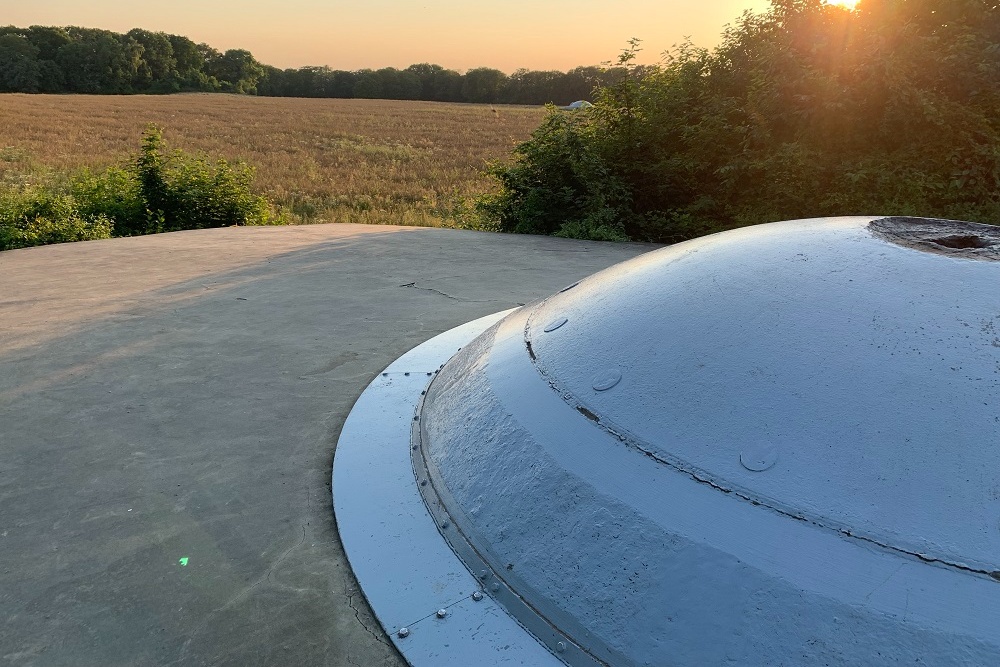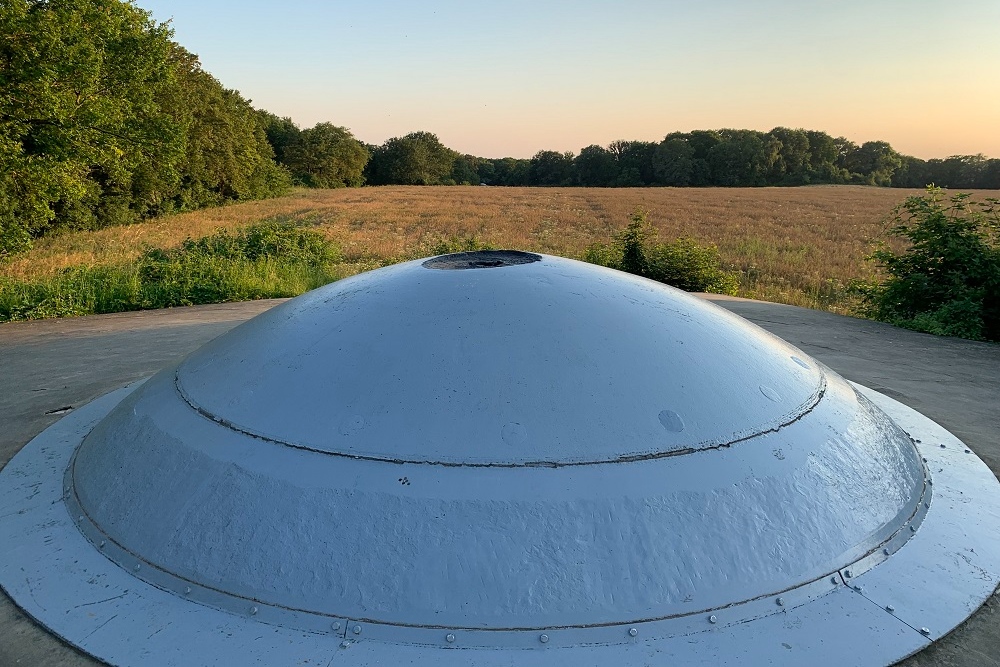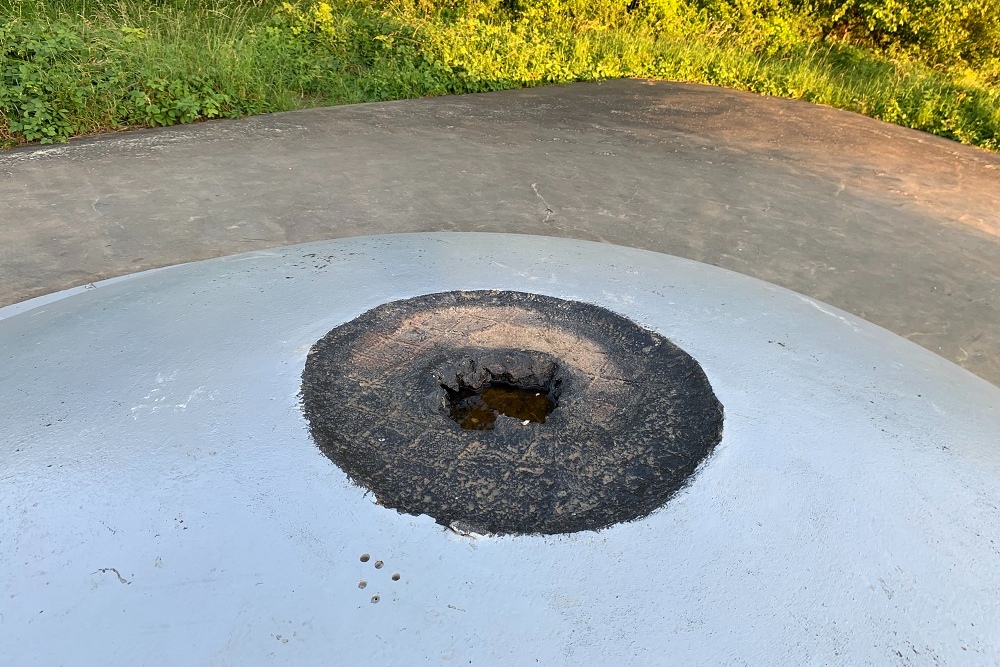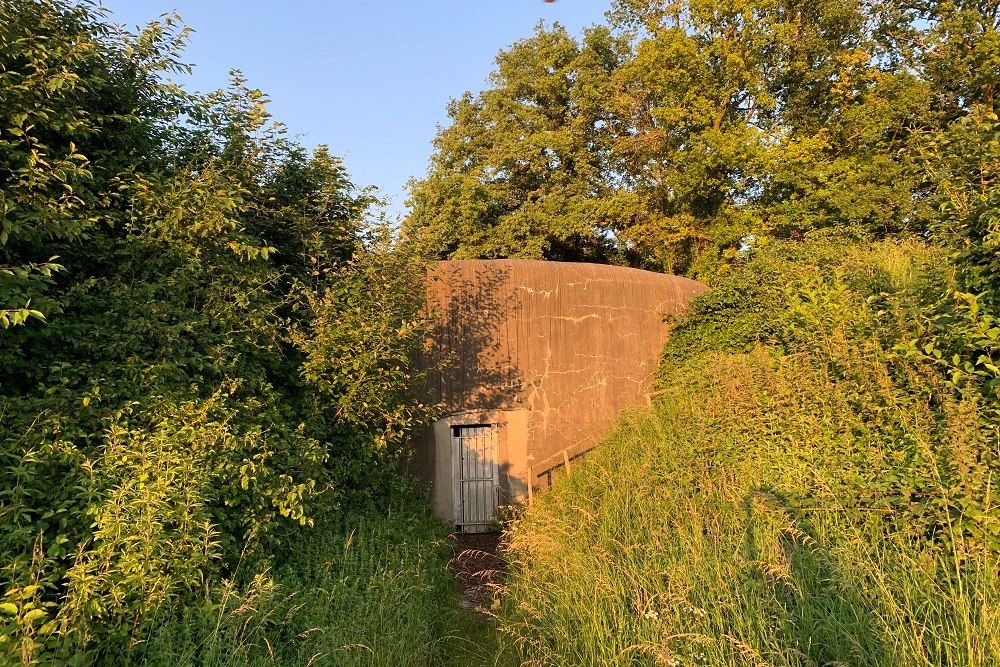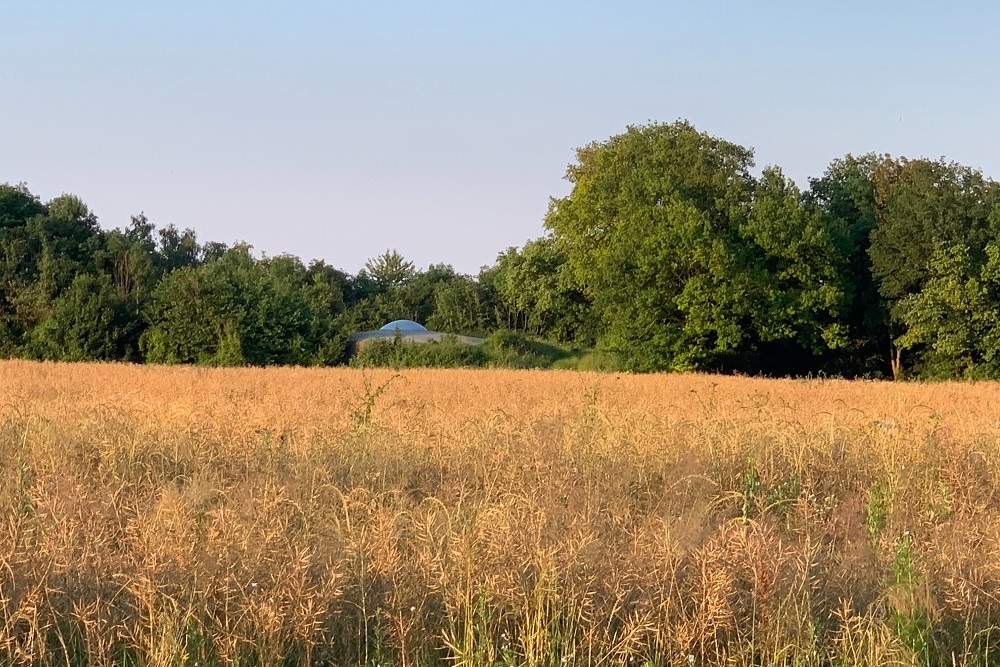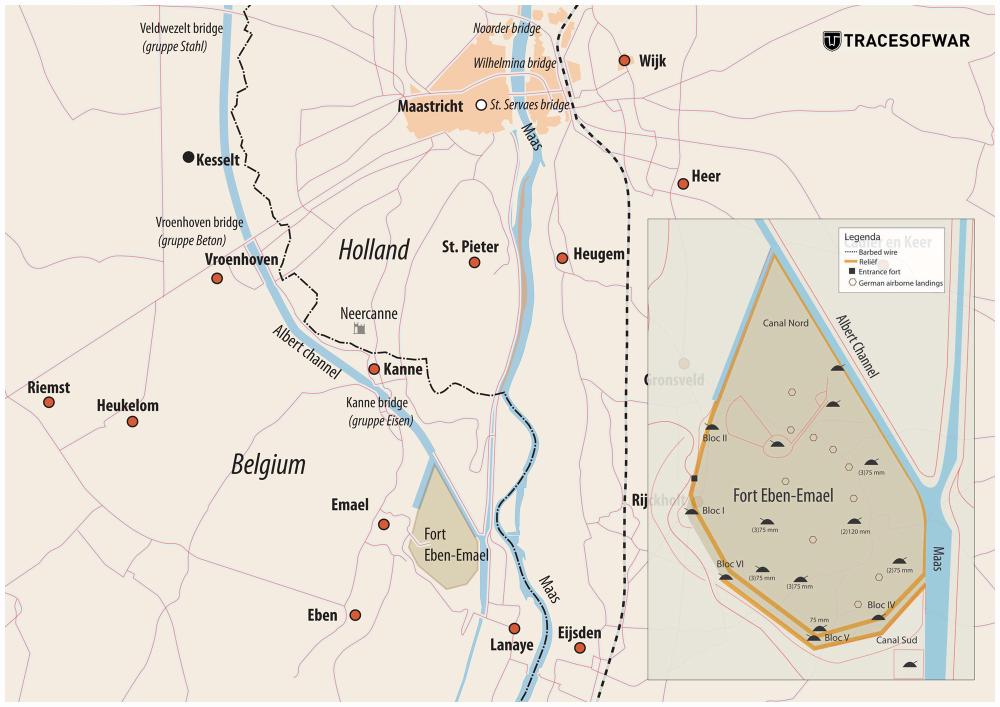Turret Nord Fort Eben-Emael
In the southeastern part of the fort, turret Nord is located.
Photo 1 shows turret 120 in the background.
It is one of the 3 turrets that are part of the fort. The turret is equipped with two 75 mm rapid-fire cannons. In the photographs the turret is in retracted position so that the guns are not visible. Like all the other turrets, a 50 kg hollow charge was detonated on this turret during the battle of the fort on May 10th and 11th. At this turret even twice at the same spot. The spot was painted black in later years. From the outside, there appears to be little damage. But the damage from the inward, explosion, pressure wave and vibration to the space under the dome was there. The dome was disabled as a result.
This is also one of the bunkers thas was equipped with an exit at the level of the plateau itself (photo 4). This exit was used for guard patrols. Within this entrance was an additional steel door for defense. The Germans took advantage of this weak point in the defense of the fortress, capturing the turret bunker. By placing a hollow charge of 12.5 kg, they managed to gain access. In this action, several Belgian soldiers were wounded and one was killed.
On the outside, little of the damage done by the hollow charges can be seen. The turret was 40 cm thick. However, the effect of the hollow charge was to concentrate the explision in one spot, generating tremendous heat that melted through the armor. The same effect, incidentally, has the typically shaped shell head of the Panzerfaust and the somewhat lesser known Panzerschreck.
The damage done by the hollow charge was camouflaged after the capture. From the looks of it, the hole the hollow charge hit was sealed with concrete. This camouflage served to conceal the Germans' new secret weapon.
Even now almost 100 years after the fort was built, the turret and reinforced concrete emplacement are perfectly preserved.
Do you have more information about this location? Inform us!
Source
- Text: Ed Lewandowski
- Photos: Ed Lewandowski
- La Position Fortifiée de Liège, Coenen & Vernier
Related books
Nearby
Museum
- Fortress Eben-Emael - Eben-Emael (Bassenge)
- The Bridge of Vroenhoven - Vroenhoven (Riemst)
- Museum Maison du Souvenir - Hermalle-sous-Argenteau
Point of interest
- Position Anti-aircraft Section MiCA - Eben-Emael
- Fortress Eben-Emael - Administration building - Eben-Emael (Bassenge)
- Temporary Cemetery Fallen Soldiers Fort Eben-Emael - Eben-Emael
Monument
- Commemorative Plates Fort Eben-Emael - Eben-Emael (Bassenge)
- War Memorial Fort Eben-Emael - Eben-Emael (Bassenge)
- Memorial 120th Regiment 30th Division USA - Eben-Emael (Bassenge)
Cemetery
- Belgian War Graves Lanaye - Lanaye (Visé)
- Commonwealth War Grave Lanaye - Lanaye (Visé)
- Belgian wargraves Kanne - Kanne (Riemst)
Remembrance Stone
- Stumbling Stone Vroenhof 3 (now number 16) - Eijsden
- Stumbling Stones Diepstraat 55 - Eijsden (Margraten)
- Stumbling Stone Steegstraat - Eijsden
Fortification
- Air Ventilation System Fort Eben-Emael - Eben-Emael
- Fort Eben-Emael Bloc IV - Eben-Emael
- Fort Eben-Emael - Artillery Casemate Vise 1 - Eben-Emael (Bassenge)
